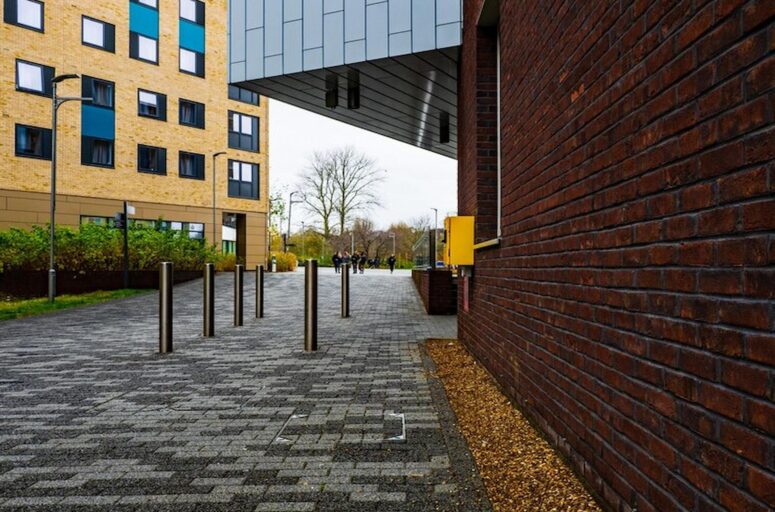What if a single tool could deter theft, protect employees, improve productivity, and even solve internal disputes — all at once? CCTV in the workplace is doing just that. But while the benefits are clear, the rules and best practices are not always so obvious. Before you rush to install cameras, it’s essential to understand the fine line between protection and privacy. Let’s uncover how to use CCTV the right way — to secure your workspace without crossing legal or ethical boundaries.
In today’s digital age, workplace security goes beyond locks and alarms. Increasingly, companies are turning to Closed-Circuit Television (CCTV) systems to monitor activity and deter unwanted behaviour. Whether it’s a warehouse, office, or retail shop, CCTV can play a vital role in keeping people and property safe.
But with great power comes great responsibility. CCTV in the workplace brings significant legal, ethical, and practical considerations. Employees may worry about constant surveillance and invasion of privacy. On the other hand, employers must ensure that camera usage complies with laws and doesn’t damage morale. This article explores the benefits, the rules you must follow, and best practices to strike the perfect balance.
1. Why Businesses Are Embracing CCTV
Understanding the value CCTV adds to modern work environments.
Today’s businesses operate in complex environments where safety, productivity, and accountability are key. Installing CCTV in the workplace has emerged as a multi-purpose solution to various challenges.
- Deterrence of Theft and Misconduct: CCTV discourages internal theft, vandalism, and workplace bullying by increasing the risk of getting caught.
- Enhanced Security: Cameras help monitor entry and exit points, especially in large facilities or late-night shifts.
- Improved Productivity: Knowing they are being monitored can encourage employees to stay on task.
- Evidence Collection: CCTV footage can be crucial in resolving disputes or supporting claims during investigations.
2. Legal Considerations and Employee Rights
Navigating privacy laws and ensuring ethical camera use.
While surveillance has many advantages, it also has legal responsibilities. Organisations must respect their employees’ rights and remain transparent about surveillance practices.
- Transparency and Consent: Informing employees about camera placement and purpose is not only ethical but often a legal requirement.
- Data Protection Laws: In regions like the UK and EU, GDPR governs how CCTV footage must be stored and used.
- Reasonable Use: Cameras should only be placed where there is a justifiable need — for example, in entryways or storage rooms, not restrooms or break rooms.
3. Where and How to Install CCTV in the Workplace
Smart camera placement for effective monitoring and compliance.
The effectiveness of CCTV in the workplace depends largely on how and where it’s installed. Poor placement can reduce benefits and potentially lead to legal trouble.
- High-Risk Zones: Focus on entry points, reception areas, stockrooms, and cash handling zones.
- Avoid Inappropriate Areas: Avoid installing cameras in private or sensitive areas such as bathrooms and personal break zones.
- Visibility and Signage: Clear signs that inform staff and visitors about CCTV use help build trust and ensure compliance.
4. Best Practices for CCTV Management
Maintaining ethical standards and efficiency post-installation.
Installing CCTV is just the beginning. Ongoing management is critical to ensuring it remains a tool for safety, not surveillance overreach.
- Set a Clear Policy: Develop and distribute a CCTV policy outlining where cameras are used, how footage is stored, and who has access.
- Train Your Team: Managers and supervisors should understand how to handle CCTV data appropriately and legally.
- Regular Audits: Review your system periodically to ensure compliance with internal policies and legal standards.
5. Employee Perception and Workplace Culture
Balancing surveillance with trust and openness.
Too much monitoring can lead to resentment and low morale. Your CCTV strategy should support, rather than undermine, a healthy work culture.
- Foster Open Dialogue: Involve employees in discussions about surveillance and explain the intent behind it.
- Respect and Trust: Emphasise that cameras are for protection, not micromanagement.
- Monitor Workplace Impact: Keep tabs on how surveillance affects workplace dynamics and adjust your approach as needed.
6. Integrating CCTV with Broader Security Measures
Combining CCTV with other tools for comprehensive workplace safety.
CCTV is powerful, but it works best as part of a wider security strategy. Don’t rely on cameras alone to safeguard your operations.
- Access Control Systems: Use ID badges or biometric systems to control who enters specific areas.
- Incident Response Protocols: Ensure that footage is used promptly and responsibly in case of an incident.
- Remote Monitoring: Consider cloud-based systems that allow real-time monitoring from any device.
7. The Future of CCTV in the Workplace
Trends shaping the next generation of workplace surveillance.
As technology evolves, so does the role of CCTV in the workplace. Businesses are increasingly adopting smarter systems that integrate AI and analytics.
- AI-Powered Surveillance: Modern systems can detect unusual behaviour or recognise license plates automatically.
- Cloud Storage and Remote Access: Flexible storage options make it easier to manage and access footage securely.
- Employee Analytics: Some tools now track movement and behaviour trends, though this raises fresh privacy concerns.
Conclusion
Installing CCTV in the workplace can be a game-changer for safety, accountability, and productivity. But its success hinges on striking a thoughtful balance between monitoring and respect. When used ethically, CCTV doesn’t just protect it empowers both employers and employees to feel secure.
However, the risks of misusing surveillance should not be underestimated. Improper usage can violate privacy laws, damage trust, and even lead to legal consequences. That’s why it’s essential to have clear policies, maintain transparency, and stay updated with legal requirements.
Ultimately, the goal isn’t to constantly watch employees—it’s to create a safe, respectful, and efficient environment where everyone feels supported. With careful planning and a human-centered approach, CCTV in the workplace becomes a tool not of control but of care.




